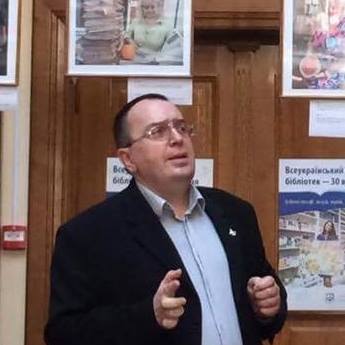
Ukrainian intelligence reveals the details of the rescue operation in Sudan
The Defence Intelligence of the Ministry of Defence of Ukraine has conducted a unique operation to rescue Ukrainian citizens from war-torn Sudan.
The information was made public by the press service of the Defence Intelligence of the Ministry of Defence of Ukraine on its social networks.
In mid-April, a civil war broke out in Sudan, caused by the confrontation between the Sudanese army and the so-called Rapid Support Forces, which was accompanied by artillery duels and the use of aviation in cities.
In order to save Ukrainian citizens from the war-torn capital of Sudan, it was decided to involve employees of the Defence Intelligence of the Ministry of Defence of Ukraine for the conduction of the “Trojan Camel” operation.
The extremely dangerous operation was complicated by the geographical location of Khartoum – the city is located in the center of Sudan, on the way to which there are kilometers of territories covered by hostilities.
The military had to move through the areas that regularly passed from one warring party to another. The operation was also hindered by the lack of communication with our citizens.
“There was a group of special forces with less than 10 people. Compared to the rescue operations of the United States, which used helicopters, armored vehicles, and special forces, or Saudi Arabia, which used a missile cruiser in the port of Sudan, we acted alone without armored vehicles, aviation or heavy weapons, because all our forces are currently deployed at the front,” said Yarema, a military intelligence officer who participated in the special operation.
In order to save people, Ukrainian intelligence involved locals, calculated the safest routes and, taking advantage of the temporary truce, launched the operation.
“One route could have up to 40-50 checkpoints of the forces that could not be identified. They could not be contacted or otherwise coordinated. It [the route] was one of the most difficult things,” the military intelligence officer says.
In total, the approximate route of the special forces was more than 1,300 kilometers one way from the capital of Sudan only, along the roads through the towns of Ad-Damer, Karima, Ad-Dabba and Wadi Halfa to the Agrin border crossing on the border with Egypt.
Khartoum Airport
The majority of Ukrainians worked in the capital of Sudan in the aviation industry as aviation mechanics, pilots and flight attendants. That circumstance significantly increased the risks: the airport immediately turned into a battlefield, where our citizens remained stranded without food and water.
“We drove to work as usual and after 5 minutes the shooting started, and it started from all sides. There was no chance to escape or run, we hid in the hangar,” said engineer Maksym Lemish.
After a few minutes, the airport turned into a battlefield. All the time until the moment of rescue, the Ukrainians were hiding in one of the hangars in which they used to work. After some time, water and food were running out, and the hostilities in the country became more and more intense.
Shooting was heard near the army headquarters in the center of the capital. Rapid Support Forces announced the capture of Khartoum airport. They took control of the capital’s airport and the presidential palace.
According to Ukrainian citizens, armed militants broke into the airport and, taking the territory under their control, began to inspect the buildings. Finding the Ukrainians in one of the hangars, they took all their money.
In total, the Special Forces of the Defence Intelligence of the Ministry of Defence of Ukraine managed to evacuate more than a hundred Ukrainians, citizens of Georgia, Canada, and Peru. Among the evacuees were 12 children.
It is forbidden to divulge the details of the operation, but many other countries have already used the “Trojan camel” route of Ukrainian agents to save their citizens.
The presence of Russian mercenaries
According to the Defence Intelligence of the Ministry of Defence of Ukraine, Russia was involved in the start of the civil war in Sudan. In the confrontation between the two power structures, which turned into a war, Russia took the side of the special forces of the Rapid Support Forces, led by the country’s vice president, General Mohamed Hamdan Dagalo.
Russian Foreign Minister Lavrov arrived in the country 6 weeks before the hostilities began. He allegedly brought some equipment. Russia also used mercenaries from the Wagner Private Military Company to train personnel of the Rapid Support Forces. According to some information, the Kremlin provided missile weapons for military operations.
Russia’s main interest in the war in Sudan is the country’s large gold reserves, which can play a strategic role for the Russian economy under sanctions. According to CNN journalists, in 2022, Dagalo arrived in Moscow on a plane loaded with gold. There were at least one and a half dozen such boards with Sudanese precious metal.
SUPPORT MILITARNYI
Even a single donation or a $1 subscription will help us contnue working and developing. Fund independent military media and have access to credible information.


 Роман Приходько
Роман Приходько 
 Віктор Шолудько
Віктор Шолудько 
 Андрій Харук
Андрій Харук 

 Андрій Тарасенко
Андрій Тарасенко 
 Yann
Yann 
 СПЖ "Водограй"
СПЖ "Водограй" 

 ГО "Військова школа "Боривітер"
ГО "Військова школа "Боривітер" 

 Катерина Шимкевич
Катерина Шимкевич 
 Олександр Солонько
Олександр Солонько 
 Андрій Риженко
Андрій Риженко 




